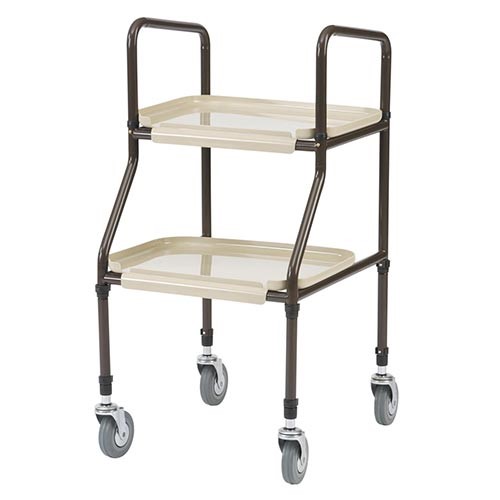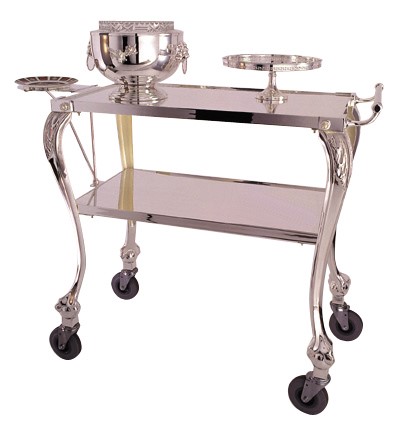Fancy a Cuppa?
The project to make our house age friendly has made us think a lot about day to day life, the challenges that ageing may bring and how layout and design in the home can assist.
Some years ago we helped with clearing the home of an elderly relative and noted the collection of trollies that she had amassed, including a Hostess Trolley (more of that later). At the time, we were surprised by how many there were, as they took up a fair bit of space on each of the 3 floors of the house. However, we now understand the reason for the apparent trolley mania. If you struggle to hold things steady when you walk, then carrying hot food and drinks means there is a risk of spills or breakage
If you struggle to hold things steady when you walk, then carrying hot food and drinks means there is a risk of spills or breakages, which at the very least require clearing up, but could result in injury. Reaching the dining table or comfy chair with a full mug of tea and intact custard creams, requires good dexterity and balance, even more so with a full plate of food. Soup lovers may recall the Victoria Wood sketch where Julie Walters’ elderly waitress delivers almost empty bowls to the diners. An increase in spillages is likely to lead to thumbing or scrolling through the catalogue pages for trolleys.
So what has this got to do with our renovation project?
The longer the distance from kitchen worktop to dining location, the greater the risk of something being dropped. A route involving separate rooms, doorways and corridors is common in houses with traditional layouts. Modern townhouses will sometimes have kitchens and dining rooms on separate floors. Our 1950’s house had been adapted in 1980 to create an open plan kitchen and dining area. It had a separate utility room which had to accommodate the fridge/freezer, dishwasher and washing machine, as the kitchen was designed before these appliances became commonplace.
One of our first purchases on moving in was - - - a trolley! and for four years we wheeled between kitchen sink and dishwasher and back again transporting our dirty/clean crockery etc. Had I been wearing a pedometer no doubt the steps between fridge and kitchen would have helped meet my targets; every cuppa involved a return journey of about 16 metres to get milk.
The new open plan ground floor has a kitchen work surface adjacent to the dining table, it will take a a couple of steps to carry full mugs and plates to the dining table.
Our ground floor will be completely level with no steps or slopes. Our age-friendly housing project has made me view things in new ways. I am now surprised to see changes in floor level that require steps being introduced as part of house renovation or new builds. Level changes can be used as a demarcation of spaces or a way to keep ceiling levels higher but:
- They increase the risk of accidents, especially in high traffic areas
- They prevent access for anything on wheels (people or trolleys)
 So if you are buying, renovating or building a home, consider the trolley test:
So if you are buying, renovating or building a home, consider the trolley test:
Could you make full use of one of these in your home should you need to?
When royalty or a local celebrity pops by would you be able to serve your nibbles on this?
Our house was built in 1950, and not long after that the ‘Hostess Trolley’ came onto the market in the UK to enable ‘housewives’ to prepare a meal, keep it hot while guests enjoyed pre-dinner nibbles and serve at the dining table. I understand that the Hostess Trolley (yes, they are still called that) has become fashionable again. My only regret is that I now have no excuse to get one.
This is Margaret’s fifth guest Housing LIN blog following the progress of turning her 1950s house into an accessible home. The other parts are:

Comments
Posted on by April Cole
My mother in Australia has a hostess trolley! Sadly I don't as my London flat is too small. This is a thought provoking blog - thank you
Posted on by Katey Twyford
I love this article, not least because my mother in law has two 'hostess trolleys' one for upstairs and one for downstairs. The open plan design of rooms will also help people living with dementia to move about and do things more easily as there will be visual prompts and reminders of where things are and what you are trying to do.
Add your comment